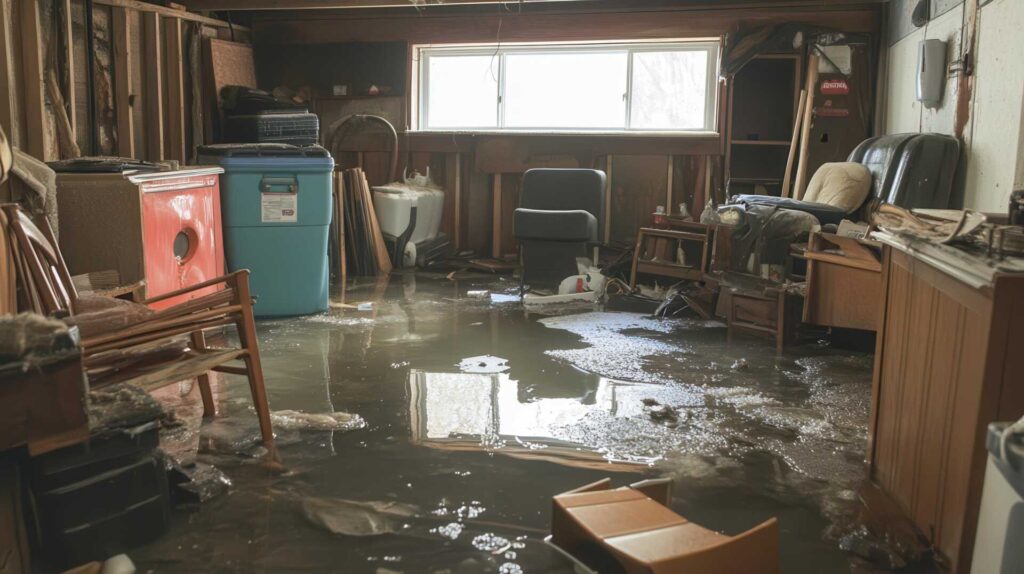
Contents
Choosing the top techniques for basement flood restoration is essential to address this issue effectively. Proper methods expedite water removal and prevent mold growth and structural damage. Understanding the right approaches can make a significant difference in your situation. What are the most effective strategies you should consider to protect your property?
Key Takeaways
- Top techniques ensure rapid extraction of water, minimizing damage and preventing costly repairs from prolonged exposure.
- Advanced methods reduce the risk of mold growth by promoting effective drying and controlling humidity levels.
- Professional services utilize specialized equipment for thorough damage assessment and efficient restoration planning.
- Proper documentation of the restoration process aids in maximizing insurance claims and streamlining recovery.
- Employing best practices preserves structural integrity, ensuring long-term safety and functionality of the basement.
Understanding the Importance of Timely Flood Restoration
When water floods your basement, acting quickly is vital to prevent extensive damage and costly repairs. The longer you wait, the more severe the flood damage becomes. Immediate action can greatly shorten your restoration timeline, minimizing the risk of mold growth and structural issues.
Understanding that water can seep into walls and flooring, you’ll appreciate the need for rapid intervention.
You should document the damage and contact professionals who specialize in flood restoration. They’ll assess the situation and implement effective strategies to extract water and dry the area. This swift response helps preserve your belongings and prevents long-term complications.
Additionally, adhering to a well-defined restoration timeline is essential; delays can escalate repair costs and complicate insurance claims. By prioritizing timely flood restoration, you safeguard your property and ensure a smoother recovery process.
Effective Water Extraction Methods
Timely water extraction is a critical step in the flood restoration process, greatly impacting the overall effectiveness of recovery efforts.
To begin with, you’ll want to conduct a thorough damage assessment to determine the extent of water intrusion. This step ensures that you understand the volume of water that requires removal and identifies any potential hazards.
For effective water removal, utilize submersible pumps for large volumes of standing water. These pumps efficiently draw out water, minimizing damage to your property.
After the bulk of water is removed, employ industrial-grade wet vacuums to extract residual moisture from carpets and hard surfaces.
Additionally, consider using dehumidifiers to lower humidity levels, preventing further damage. If necessary, specialized equipment like truck-mounted extraction systems can expedite the process in severe cases.
Advanced Techniques for Mold Prevention
Although it may seem intimidating, implementing advanced techniques for mold prevention is crucial in safeguarding your property after a flood.
First, ascertain proper air circulation in your basement. Utilize fans and dehumidifiers to promote airflow, reducing moisture levels that foster mold growth.
Next, consider installing vapor barriers on walls and floors to prevent groundwater infiltration.
Regularly inspect and clean gutters and downspouts to direct water away from your foundation. Additionally, use mold-resistant materials during repairs; these can markedly reduce the likelihood of mold development.
Incorporate biocide treatments in areas prone to moisture. These treatments inhibit mold spores from proliferating.
Finally, maintain a consistent temperature and humidity level in your basement, ideally below 60% relative humidity, to create an unfavorable environment for mold.
Structural Drying and Dehumidification Strategies
To effectively restore a flooded basement, implementing structural drying and dehumidification strategies is essential. These methods enhance moisture control and preserve the structural integrity of your property. Using specialized equipment like high-capacity dehumidifiers and air movers accelerates the drying process, reducing the risk of mold growth and further damage.
| Strategy | Description | Benefits |
|---|---|---|
| Air Movement | Utilize fans and air movers | Increases evaporation rates |
| Dehumidification | Employ dehumidifiers | Lowers humidity levels |
| Temperature Control | Adjust ambient temperatures | Enhances drying efficiency |
| Moisture Monitoring | Use hygrometers | Tracks progress and effectiveness |
Professional Cleanup and Repair Services
After implementing effective structural drying and dehumidification strategies, the next step in restoring a flooded basement involves engaging professional cleanup and repair services.
These experts provide an emergency response to assess the extent of damage and develop a thorough restoration plan. They utilize advanced equipment for mold remediation, ensuring your space is safe and healthy.
Professional services also handle the intricate process of repairing structural components, such as flooring, walls, and insulation, to prevent future issues.
Additionally, they assist with managing insurance claims, assuring you receive the maximum coverage for repairs. Their expertise ensures that all necessary documentation is accurately completed, expediting the claims process and alleviating your stress.
Recap
In the wake of a basement flood, swift action is your strongest ally. Picture powerful submersible pumps and industrial vacuums swiftly siphoning away standing water, while dehumidifiers hum softly, whisking away moisture like a gentle breeze. By choosing top restoration techniques, you’re not just preventing mold; you’re safeguarding your home’s foundation. Trust professionals to navigate the complexities, ensuring your space returns to its former glory, fortified against future threats and ready to embrace its next chapter.
Recent Posts
Transforming Flooded Basements: Effective Restoration Secrets
You might think it’s a coincidence that so many basements flood during heavy rain, but
Rapid Water Extraction Techniques for Flood Recovery
Imagine a community hit by severe flooding, where rapid water extraction saved homes from extensive
Top Techniques for Basement Flood Damage Restoration
Many homeowners underestimate the complexities involved in basement flood damage restoration. It’s not just about
